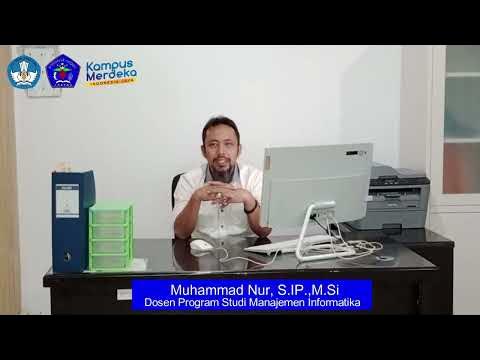Objetivos e métodos (Aula 1, parte 3)
Summary
TLDRThis transcript discusses methods for improving academic reading and comprehension through a structured approach using ‘fichas’ (summary cards). The speaker outlines common cognitive biases, such as reading to confirm preconceived ideas, and emphasizes the importance of understanding the author’s position without immediate judgment. The course introduces a three-level system of reading analysis: express, detailed, and expanded. This approach aims to help readers break down, understand, and synthesize complex academic texts by identifying the core problem, thesis, and argumentation, ultimately leading to deeper comprehension and critical engagement with the material.
Takeaways
- 😀 Cognitive biases can influence reading, as people tend to focus on information that confirms their existing beliefs.
- 😀 A common issue in reading is approaching texts with preconceived positions, either agreeing or disagreeing with the author, which can hinder true understanding.
- 😀 It's important to read with the intent of understanding the author's argument before making judgments about the content.
- 😀 The technique of using 'fiches' (cards) is proposed as a method to correct cognitive biases and improve reading comprehension.
- 😀 The first step in reading academic texts should be to understand the author's position in its full complexity without oversimplification.
- 😀 The fiches method involves reading the text in three levels of complexity: basic, detailed, and expanded.
- 😀 The first level (espresso closure) involves identifying the main thematic blocks of the text and summarizing them minimally.
- 😀 The second level (detailed closure) goes deeper into each thematic block, analyzing the specific tasks or arguments within each section.
- 😀 The third level (expanded closure) requires synthesizing the text’s main ideas into a coherent narrative, focusing on the problem, thesis, and argumentation.
- 😀 This method helps readers avoid biases and encourages a deeper, more structured understanding of the text, leading to improved analysis and writing.
- 😀 The course emphasizes practical, ongoing practice to develop these reading and analytical skills, with frequent evaluations to track progress.
Q & A
What are the two common mistakes people make when reading texts?
-The two common mistakes people make are reading in a fragmented manner, focusing on what is familiar or confirming their existing beliefs, and immediately positioning themselves either for or against the text, which impedes understanding the author's perspective.
What is a cognitive bias, and how does it affect reading comprehension?
-A cognitive bias refers to a systematic deviation or distortion in the way we think. In reading, this bias often leads to the confirmation of pre-existing beliefs rather than allowing the text to be understood objectively.
How can readers avoid immediate judgment while reading an academic text?
-To avoid immediate judgment, readers should focus on understanding the text's argument first before forming an opinion. They should allow the author's reasoning to unfold and not rush to agree or disagree with the content.
What does the 'Ficha' method involve in reading comprehension?
-The 'Ficha' method involves breaking down a text into its core components, systematically reconstructing the author's argument, and avoiding oversimplification. This process is done through three levels of complexity: Expressed Closure, Detailed Closure, and Expanded Closure.
What are the three levels of complexity in the 'Ficha' method, and what do they entail?
-The three levels are: 1) Expressed Closure, which involves identifying and summarizing the main themes and blocks of the text. 2) Detailed Closure, which breaks down the text further into smaller arguments and sub-sections. 3) Expanded Closure, which synthesizes the text by identifying the problem, thesis, and argumentation in the text.
Why is it important to reconstruct the author's position in its full complexity?
-Reconstructing the author's position in its full complexity helps readers understand the text more accurately and avoids simplifying or distorting the argument. This process ensures a deeper and more precise comprehension of the author's intentions.
What are the three essential components that every argumentative text addresses?
-Every argumentative text addresses: 1) The Problem, which is the issue the text aims to address. 2) The Thesis, which is the author's position or argument. 3) The Argumentation, which is the reasoning and evidence the author uses to support their thesis.
How can reading and analyzing texts in this structured way benefit students in their academic careers?
-This structured approach to reading helps students develop critical thinking and analytical skills. By breaking down and fully understanding texts, students can engage with complex ideas more effectively, improving their ability to write and discuss academic subjects.
What does the instructor mean by 'sedimentation of thinking' in the course?
-The 'sedimentation of thinking' refers to the gradual development of deeper understanding and the internalization of critical reading and analysis skills over time. This process involves repeated practice and reflection to move beyond surface-level understanding.
What is the ultimate goal of the reading method described in the transcript?
-The ultimate goal of the reading method is to enable students to read and understand texts in their entirety, without biases or oversimplifications, and to reconstruct the author's argument clearly and accurately in their own words, using a structured and methodical approach.
Outlines

This section is available to paid users only. Please upgrade to access this part.
Upgrade NowMindmap

This section is available to paid users only. Please upgrade to access this part.
Upgrade NowKeywords

This section is available to paid users only. Please upgrade to access this part.
Upgrade NowHighlights

This section is available to paid users only. Please upgrade to access this part.
Upgrade NowTranscripts

This section is available to paid users only. Please upgrade to access this part.
Upgrade NowBrowse More Related Video
5.0 / 5 (0 votes)





